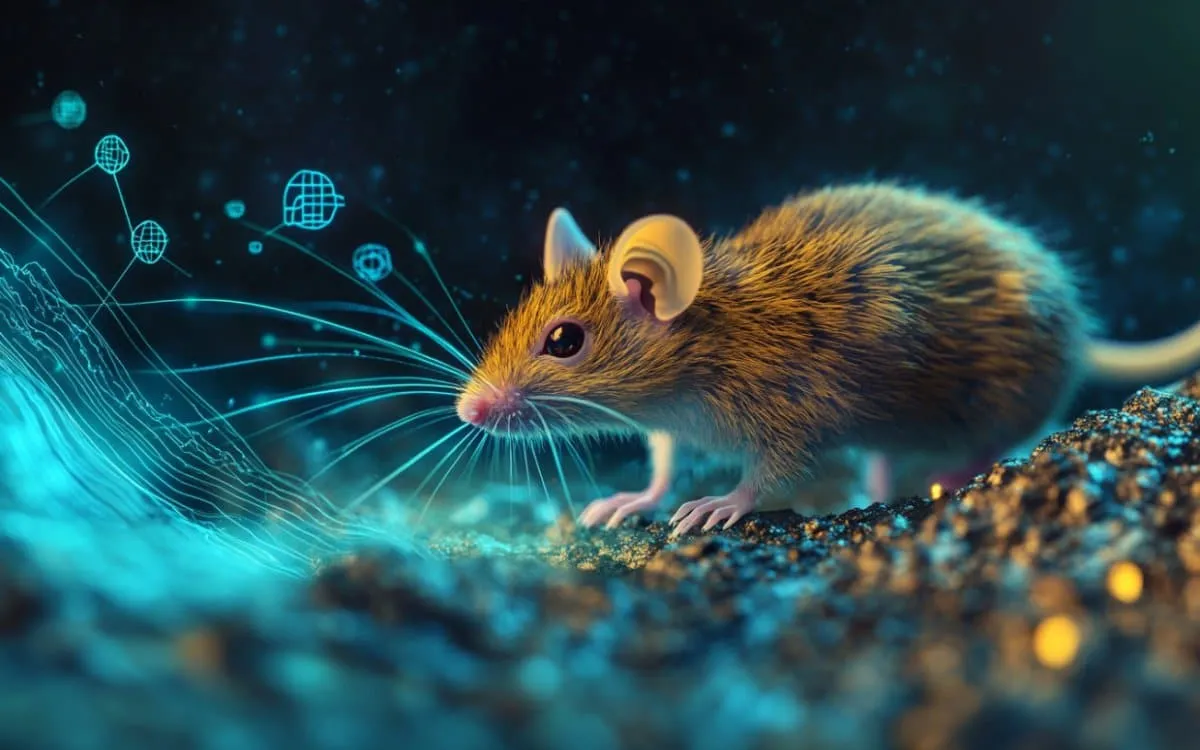
Recent studies conducted by the Weizmann Institute of Science have unveiled a groundbreaking discovery about how mice navigate their environment. Traditionally, it was believed that mice relied solely on touch through their whiskers to explore their surroundings. However, new findings indicate that these small rodents also utilize sound produced by their whiskers, thereby showcasing a remarkable example of multisensory integration.
Mice, often found nestled in dark burrows with limited vision, utilize a behavior known as whisking to detect objects around them. This process involves brushing their sensitive whiskers against various surfaces. The research team, led by Prof. Ilan Lampl, has shown that whisking generates subtle sounds that are processed by the auditory cortex of the mice. These findings, recently published in Current Biology, challenge the traditional view of whisking as merely a tactile act.
The research team, including Dr. Ben Efron and colleagues, recorded the sounds produced by whiskers interacting with different surfaces such as dried Bougainvillea leaves and aluminum foil. Using sensitive microphones capable of capturing ultrasonic frequencies—beyond human hearing—the researchers discovered that even when tactile sensation was blocked, the auditory cortex still responded to the whisker-generated sounds. This suggests that mice can interpret these sounds as a distinct sensory signal independent of touch.
To further investigate this phenomenon, the researchers conducted behavioral tests where they trained mice to recognize objects using only the sounds produced by their whiskers. Remarkably, even without the ability to feel the objects, the mice were able to identify and respond to the sounds consistently. This finding emphasizes the brain's capacity for multimodal processing, where both tactile and auditory information are integrated to enhance perception.
The implications of this research extend beyond understanding mouse behavior. The insights gained from this study could significantly influence various technological fields. For instance, advancements in prosthetics and sensory rehabilitation could benefit from understanding how the brain processes combined sensory inputs. Furthermore, innovations in robotics may emerge from mimicking the multisensory integration observed in the mouse brain, potentially leading to enhanced sensory systems for robots.
Given the findings that the mouse brain’s whisking network operates in an integrative manner, there is potential for developing new approaches in sensory rehabilitation for individuals with brain trauma. This could lead to exercises that enhance sensory perception, particularly for those who are visually impaired, utilizing auditory cues similar to those generated by a white cane.
This research not only redefines our understanding of mouse sensory systems but also opens up a multitude of research avenues regarding how the brain integrates different types of sensory input. By demonstrating that whisking produces sounds that can be perceived separately from touch, the study encourages further exploration into the complex mechanisms of sensory perception.
In summary, the innovative research from the Weizmann Institute of Science sheds light on the sophisticated ways in which mice navigate their environment through the combined use of touch and sound. As scientists continue to unravel the intricacies of the mouse brain, the potential applications for technology and rehabilitation are immense, paving the way for future developments in sensory integration and perception.